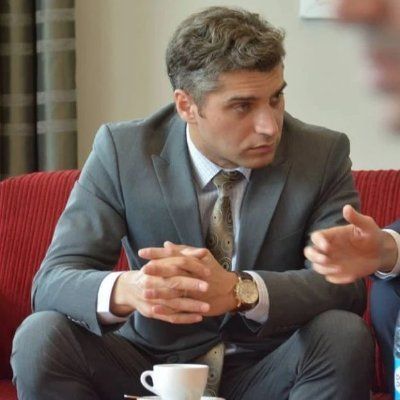Trump, Tehran, and ticking clock: is Middle East on the brink? [ANALYSIS]
![Trump, Tehran, and ticking clock: is Middle East on the brink? [ANALYSIS]](https://www.azernews.az/media/2025/06/17/trumptehran072308745.png)
As tensions continue to flare in the Middle East, all eyes are once again turning to the United States—and particularly to the actions and rhetoric of US President Donald Trump. The world took notice when Trump abruptly left the recent G7 summit in Canada, offering no official explanation. What followed was an unmistakable barrage of statements on his Truth Social platform, directed squarely at the Islamic Republic of Iran. The question now reverberating across international circles is stark: What is Trump really preparing for?
In his usual brash manner, Trump declared he had repeatedly urged Iran’s leadership to return to the negotiating table. He claimed to have warned the government of Iran “time and again” that the United States was prepared to act decisively if Tehran refused to cooperate. His latest messages suggest that, in his view, the time for diplomacy has passed—he has “pressed the red button,” figuratively if not literally.
In one of the more alarming posts, Trump issued a direct call to the Iranian people to flee the country. Whether this was a tactical psychological move or a genuine warning of imminent danger, the implications are grave. It is no longer just about strategic deterrence; it appears to be a final plea to the population, one perhaps designed to circumvent the regime and appeal directly to those who have long suffered under its rule.
Trump’s language indicates that Washington may now consider the diplomatic red lines crossed. For Tehran, this is nothing short of a blaring alarm. And for the Islamic Republic, there appears to be only one path left to avoid catastrophe: surrender and compromise.
But herein lies the dilemma. Iran, despite the mounting pressure, refuses to project weakness. The regime, which has endured for 46 years through war, sanctions, and isolation, understands that the mere appearance of defeat could spell its end. Domestically, a population long fatigued by repression and economic hardship simmers with unrest. Internationally, the animosity from the United States and Israel is as ferocious as ever. One misstep could drive the final nail into the regime’s coffin.
This is where the Middle East stands today: at a precipice, staring into the abyss. The stakes could not be higher. Will it be survival or self-destruction?
Some analysts suggest the Islamic Republic may be approaching a point of desperation so acute that it could trigger catastrophic decisions. Consider Iran’s network of known—and unknown—nuclear facilities scattered throughout its provinces. The destructive potential they carry cannot be overstated. Should the regime opt for a scorched-earth exit or retaliatory nuclear brinkmanship, the fallout, literal and geopolitical, would be devastating. Millions of lives could be at risk. The spectre of mass human loss, environmental catastrophe, and generational trauma looms over every miscalculation.
And now, new signs indicate that the United States may be preparing for more than posturing. Recent reports have emerged showing the deployment of aerial refuelling points by the US military across the Atlantic, a tactical move suggesting Washington is gearing up for extended operations. Whether these are precautionary measures or a prelude to escalation remains to be seen. But they add another layer to an already combustible situation.
Adding fuel to the fire was Trump’s pointed response to French President Emmanuel Macron, in which he dismissed any talk of a ceasefire. “It has certainly nothing to do with a ceasefire. Much bigger than that,” he posted. This is not the language of de-escalation. These are not the words of a man seeking détente. They are the signals of a far larger, and far more dangerous, endgame.
So, what lies ahead for Tehran?
The Iranian leadership must now grapple with the terrifying consequences of its rigid posture. For years, it has relied on ideological intransigence and geopolitical hedging to survive. But that strategy is rapidly becoming untenable. The regime now faces the reality that its actions may not only spell its demise, but may plunge an entire region into chaos. And the region, already battered by decades of war, displacement, and sectarian violence, is in no condition to withstand another cataclysm.
At this moment, there are no positive forecasts. No realistic roadmap to de-escalation has yet emerged. The political and military signals from both sides are not of conciliation but of confrontation.
What remains certain is this: whatever pain awaits Iran in the coming weeks will not remain confined within its borders. The shockwaves of its collapse or its violent last stand will ripple across the Middle East and beyond. Allies will be tested, enemies will be emboldened, and millions of innocent civilians will pay the price for geopolitical hubris.
The world watches with bated breath. Diplomacy has not yet died, but it is on life support. And unless cool heads prevail soon, the Middle East may be entering one of its darkest chapters yet.
Here we are to serve you with news right now. It does not cost much, but worth your attention.
Choose to support open, independent, quality journalism and subscribe on a monthly basis.
By subscribing to our online newspaper, you can have full digital access to all news, analysis, and much more.
You can also follow AzerNEWS on Twitter @AzerNewsAz or Facebook @AzerNewsNewspaper
Thank you!

